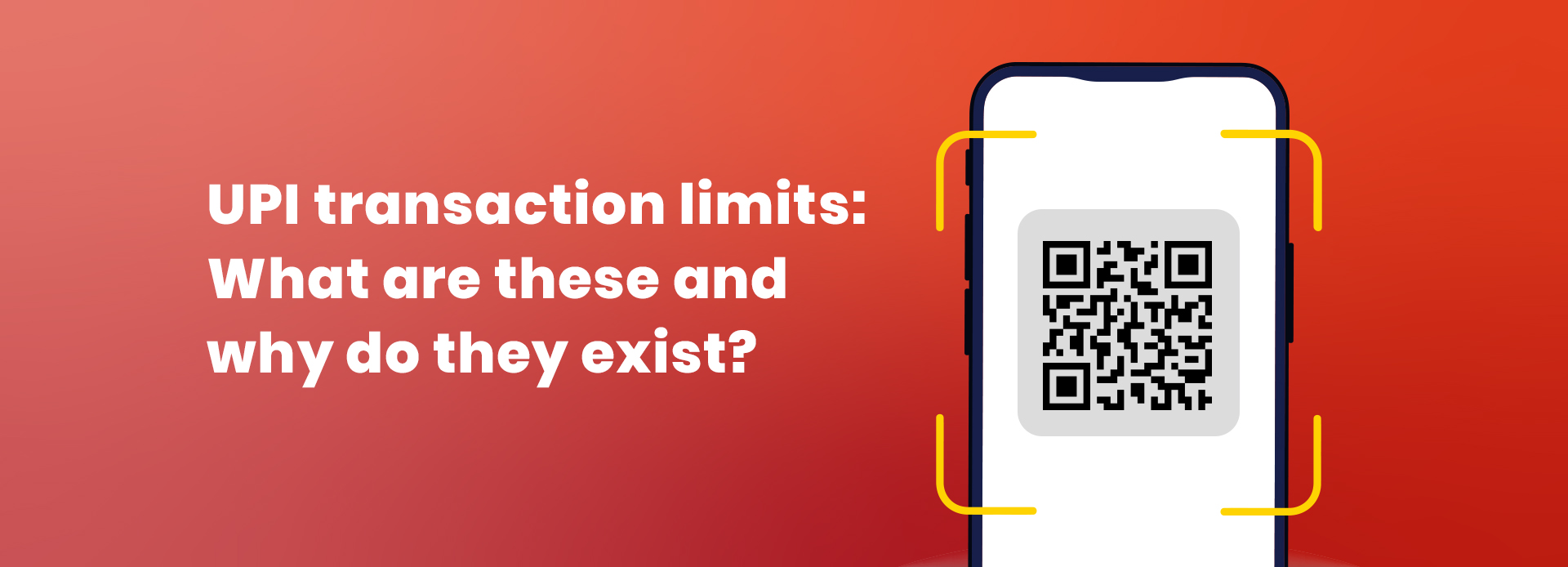
UPI transaction limits: What are these and why do they exist?
10 November 2023
In the dynamic and evolving realm of digital payments, Unified Payments Interface (UPI) has indisputably revolutionized the way we conduct financial transactions. Yet, users often encounter transaction limits that dictate the scope and frequency of UPI transactions. This blog aims to comprehensively explore the intricacies of UPI transaction limits, shedding light on their definitions, the reasons underpinning their existence, and the profound impact they wield within the digital financial ecosystem.
Decoding UPI Transaction Limits
UPI transaction limits refer to predetermined monetary thresholds placed on various types of transactions facilitated through UPI-enabled apps. These limits exhibit a nuanced diversity, contingent upon the specific nature of the transaction and the user's profile. Whether engaging in peer-to-peer transfers, making merchant payments, or settling bills, users invariably encounter these limits, which can differ based on the type, frequency, and purpose of the transaction.
Types of UPI Transaction Limits
1. Daily Transaction Limit:
- This limit dictates the cumulative value of transactions a user can initiate within a single day, encapsulating the entirety of UPI transactions conducted over a 24-hour period.
2. Per Transaction Limit:
- Certain transactions, particularly peer-to-peer transfers, may be subjected to a cap on the amount that can be transferred in a singular transaction.
3. Monthly Transaction Limit:
- Governing the cumulative value of transactions over a calendar month, this limit provides an additional layer of oversight on the user's financial activities.
Why UPI Transaction Limits Exist
1. Security Protocols: UPI transaction limits form an integral part of fortifying the security of digital transactions. By restricting the value and frequency of transactions, these limits act as a deterrent, raising the difficulty level for potential malicious exploits.
2. Risk Mitigation: In the realm of risk management, UPI transaction limits serve as a crucial line of defense. In instances of unauthorized access or fraudulent activities, these limits function as a safeguard, mitigating potential financial losses for both users and financial institutions.
3. Regulatory Compliance: Often mandated by regulatory bodies, transaction limits ensure adherence to legal standards, contributing to the overall stability and integrity of the financial system.
4. Encouraging Responsible Usage: UPI transaction limits serve as a catalyst for responsible usage. Users are prompted to maintain vigilance and adopt secure practices, fostering a culture of accountability within the digital financial ecosystem.
Switch to INDIE by IndusInd Bank industry-first security features
Download INDIE by IndusInd Bank to enjoy seamless UPI transactions and industry-first security features like:
1. Numberless Debit Card to safeguard card details from skimmers at ATM or POS.
2. Dynamic ATM Pin generation on the app whenever you physically use the card at ATM or POS.
3. Single- Use Virtual Debit Card to ensure safe online transactions.
That’s not all – with INDIE, you also get to earn more on your savings with up to 6.75% interest p.a. on your INDIE Savings Account Balance and up to 7.85% interest p.a. on your INDIE FD. Plus, INDIE offers the most transparent loyalty program. All you need to do is fund your INDIE Savings Account with ₹50,000 or more and upgrade to Megastar level – and you get to earn 3% INDIE Gems on any 3 brands of your choice. (1 INDIE Gem =₹1).
So, don’t wait. Switch to a revolutionary way to bank. Download INDIE by IndusInd Bank Now.
In a nutshell
UPI transaction limits play a pivotal role in shaping the security landscape, risk management protocols, and regulatory compliance measures of digital transactions. These limits are indispensable for shielding users and the broader financial system from potential threats.
Disclaimer: The information provided in this article is generic in nature and for informational purposes only. It is not a substitute for specific advice in your own circumstances. Hence, you are advised to consult your financial advisor before making any financial decision. IndusInd Bank Limited (IBL) does not influence the views of the author in any way. IBL and the author shall not be responsible for any direct/indirect loss or liability incurred by the reader for taking any financial decisions based on the contents and information.




